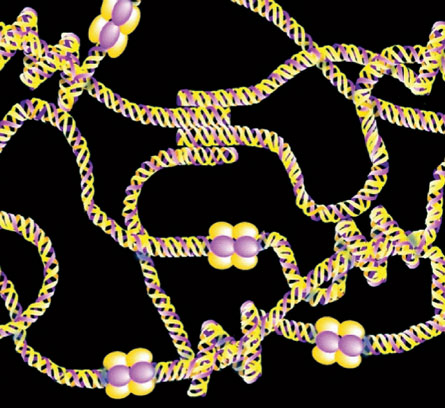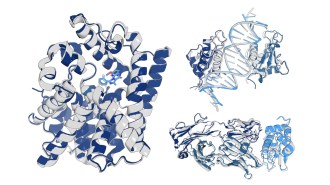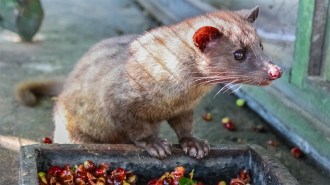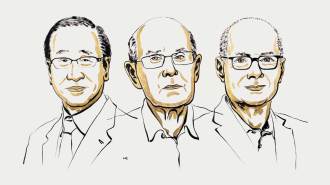
New bond in the basement
Basements house hidden treasures
— including a chemical bond never before seen in living things.
Scientists have discovered that collagen fibers in the basement
membrane — a tough, structural layer of cells that surrounds most
tissues in animals — are connected by a sulfur-nitrogen bond (SN: 9/26/09, p. 5).
Basement membranes anchor cells, provide a framework for developing
tissues and blood vessels, and help regulate cell behavior and
signaling. The discovery could help researchers understand
collagen-related diseases and could lead to new tricks for attacking
tumors, which get much of their heft from the basement membrane matrix.
This bond “is the molecular fastener,” says Billy Hudson, director of
the Center for Matrix Biology at Vanderbilt University School of
Medicine in Nashville and leader of the new work. The team’s analyses
suggest that the bond may have developed early in animal evolution,
sometime after the sponge and jellyfish lineages diverged.
RNA rising
Scientists map a series of simple, efficient reactions that could have led to RNA molecules (one nucleotide illustrated above) and may have gotten life on Earth going (SN: 6/6/09, p. 5).
Meta me
Researchers have found a simple way to steer molecules into the coveted meta position on an aromatic ring (SN Online: 3/19/09).
Double bonding
New work describes the nature of the bond between two beryllium atoms: a partnership that has long eluded chemists (SN: 6/20/09, p. 10).
Tin breaks carbon’s rules
Scientists attach a simple
hydrocarbon to triple-bonded tin atoms, violating a well-established
set of organic chemistry rules (SN: 10/24/09, p. 13).
Comet bears precursor
A building block of proteins found in samples from an icy comet’s
halo suggests the ingredients of life could have hitched a ride to the
early Earth (SN: 9/12/09, p. 8).
Pass the electrons, please
Green fluorescent protein,
the darling of cell biologists and biomedical researchers, gives up
electrons when it fluoresces, a study finds. The work may provide clues
to the protein’s original job (SN Online: 4/26/09).
Leptin leads to large litters
Pregnant hamsters
receiving the appetite-regulating hormone leptin had bigger litters,
suggesting the hormone plays an important role in physiological
investment in offspring (SN: 9/26/09, p. 14).
Chemicals stick around
Women who have trouble getting
pregnant are more likely to have high blood concentrations of certain
chemicals used in nonstick surfaces in their blood than are those who
become pregnant within the first month of trying (SN Online: 2/3/09).
Come hither
Researchers have pinpointed the molecule one plant uses to attract pollen tubes (above) to its ovaries (SN: 4/11/09, p. 10).
Ice hits new low
Nanosized chips of ice melt at -180° Celsius, much lower than scientists had thought (SN Online: 7/10/09).
Brilliant blue’s benefits
A chemical cousin of the blue dye found in Gatorade blocks a molecule that kills nerves following spinal cord injury (SN: 8/29/09, p. 10).
Yes and no
Turning off pheromones can make male and
female fruit flies super-sexy to male flies, even males of another
species. The work suggests that these chemicals can serve as back-off
signals, and it may help researchers understand how the flies
distinguish their species from another (SN: 11/7/09, p. 10).
Caught in the act
Researchers have developed a new way to see where a protein is active in cells in a living animal (SN: 7/4/09, p. 10).
Glow the way you want
A study finds that chemicals, rather than nerve cells, can control bioluminescence in fish. Three hormones act as on-off switches for glow-in-the-dark
lantern sharks (SN: 12/5/09, p. 12).






